Autumn is just around the corner and you can’t wait to spend more time frolicking outdoors. Besides watching leaves change colours and fall (only for you to pick them up later), autumn is also the best time to tend to your garden before the colder months set in.
This season is all about preparing your garden for the Canadian winter. The weather is more moderate. The plants don’t sweat out moisture as fast as they do in warmer seasons, making fall the ideal season for planting and gardening.
It’s the Most Wonderful Time of the Year—For Gardening!
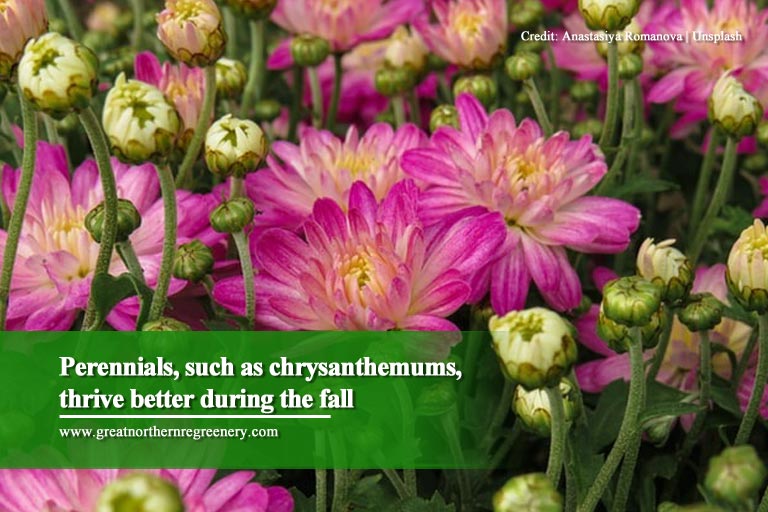
Cooler autumn weather brings plenty of benefits to your plants:
- New research finds that autumn is especially good for planting evergreens, tulips, and daffodil bulbs. Plants go dormant and are less active this time of year. With air temperatures cooler than the soil, new roots can grow without the top growing, which results in a stronger, better-developed root system for the next spring when the plant begins top growth.
- During the fall, specific flower species can grow new roots much better because there are no difficult weather fluctuations, compared to those during the spring.
- Planting and gardening are easier in clay soils during the autumn. The most difficult type of soil to tend to, clay can be soft and sticky in the spring and can go from dry to concrete-like in the winter. Gardening in Ontario feels more easy and breezy because the soil this time of year is moist and has a warm texture.
To help you get started, we’ve made a to-do list with tried and tested tips for gardening that you can follow for more organized gardening this fall:
August to September: End-of-Summer Clean-up
Nothing beats preparation, and a garden for all seasons needs a gardener that’s primed and prepped no matter the climate. When you’re in Canada, where climates are generally colder, both garden and gardener will be put to the test especially in the winter.
Here are end of summer clean-up tips and garden ideas you can do for the months of August and September:
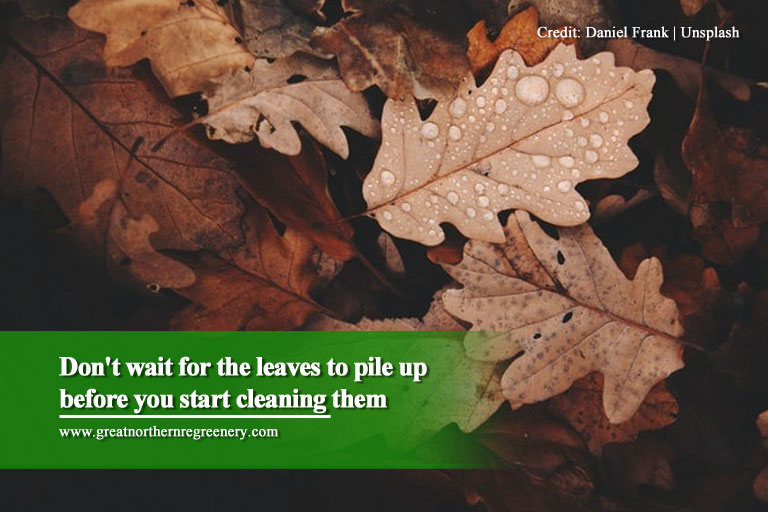
- Plant new trees and shrubs, to give them at least six weeks before frost
Autumn is a good time for planting new trees and shrubs because the soil has sufficient moisture needed for growth. The ground is still warm from the summer, so you can give them enough time to get used to their position and form new roots before winter.
Fall is also ideal to plant new flowering plants without any worry. It will also bring colour to your garden. Roses, for example, should be planted ideally in autumn, before winter.
- Collect seed and herbs for drying
Save the seeds from the plants that performed well this year. Separately put them into an envelope, label each, and add a date. That way, you can keep track of the seeds and you can use it to do DIY planting the next fall.
Do you have extra herbs? Thyme, rosemary, basil, lavender, and chives can all be dried, stored, and used over the winter.
- Weed the garden
Pull weeds before they go to seed to reduce the number of weeds next year. weeds compete with your crops for nutrients in the soil, as well as sunlight and water. When your weeds grow faster than your other plants, they begin to block out the sun that your garden plants need to thrive.
- Clean bird feeders and gardening tools
You need to clean your bird feeders, as mouldy food and bird droppings encourage bacterial growth. It is also important to clean the bird feeders during autumn because not all birds migrate, so if you have wild birds, it’s better to have your clean bird feeder ready.
You also need to organize, clean, and sharpen your garden tools. The cold weather could cause your tools to rust. Clean and sharpen your tools to keep them from rusting and keep your plants healthy.
- Plant spring-flowering bulbs
Bulbs can be planted in autumn so their flowers germinate from the soil at the right time in spring.
The right position is crucial for flowering bulbs. You need to plant bulbs in the ground at a depth of 2 to 3 times their height. After making a large and deep hole, place the bulbs in the ground with their tip facing upwards, then cover them with the soil and press down.
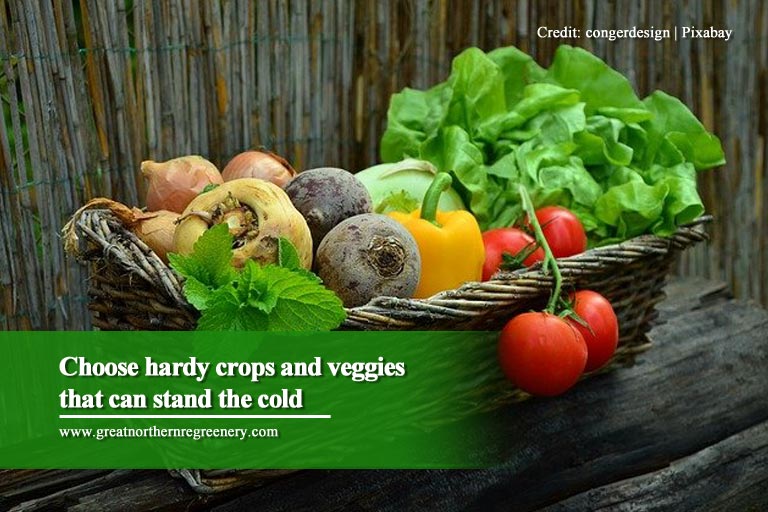
- Start your fall vegetable gardening
Late August into early September is a good time to sow peas, leaf lettuces, green beans, spinach, and more vegetables. Autumn is the best time to remove spent garden plants and prepare the soil for fall vegetable gardening.
Look for vegetable varieties with a harvest time of 65 days or less. The ground holds its warmth so your root vegetables can still continue to grow, but anything longer than 65 days will have you needing a cover for that extended cold spell because your vegetables might not survive.
- Cover water features with netting to collect falling leaves
Don’t wait for November to clean up the falling leaves. Make sure to cover your ponds, fountains, birdbaths, and other water features with netting as early as August to collect falling leaves. This makes end-of-autumn cleaning so much easier and faster.
October: Planting, Transplanting, and Everything in Between
October is the busiest part of your autumn gardening. Sandwiched between the excess warmth of summer’s end and the later, colder fall months, this is when the weather permits all the planting, transplanting, and landscaping activities.

- Transplant young trees and shrubs to new locations
Fall transplants can benefit from the months of cooler, moister weather ahead. Thanks to autumn rains, the roots of your shrubs and young trees get a chance to grow. The roots of your shrubs and trees are active this time of year, so grab the chance to transplant them around October.
- Cut diseased areas out of perennials
When shrubs, bushes, and herbaceous perennials go yellow, their stems bend towards the ground or they start to go to seed, it is time to cut them down, because they are now drawing their sap back to their roots and if they aren’t cut down, they may decay.
You can cut your bushes and shrubs to approximately a quarter of their size. However, this can vary according to its type, so make sure to find more information before cutting them.
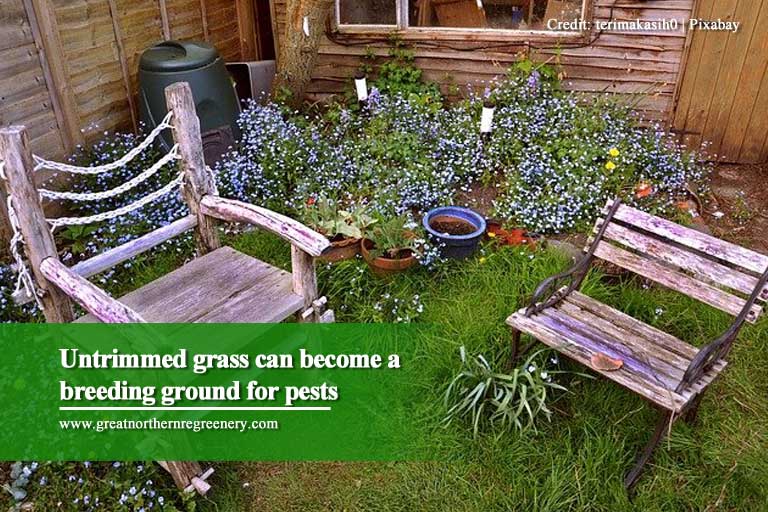
- Trim tall grass away from trees and corners of your home to discourage small rodents from creating nests
Now is a good time to start cutting the tall grass away from the trees and corners of your home. This is so rodents can’t create nests around it.
Grass can go dormant in extended periods of high temperatures, especially if the lawn is not irrigated. Try to maintain a regular mowing schedule so you aren’t removing more than 1/3 of the grass blade length.
- Remove dead annuals from the garden after a frost
Remove the dead or dying annuals and cut back soft-foliage perennials such as bleeding hearts and place compost. This is to discourage overwintering pests.
Make sure that you dispose of diseased leaves and stems. Regularly rake and compost any fallen leaves as they may come in handy after autumn. You can also place clean leaves in garden beds as a natural mulch and soil amendment, which you can till in the following spring.
- Dig up tender bulbs such as dahlia, canna, and gladiola. Wrap them in moist material and store them in a cool, dark space
Planting tender bulbs for autumn is not recommended. Bulbs like dahlia, canna, gladiola, and amaryllis cannot withstand cold weather, so they are best planted in the spring. What you can do to these tender bulbs is to dig them up in the fall and store them over the winter.
When digging up tender bulbs, loosen the roots gently with a garden fork or spade by digging several inches away from the base of the plants. Make sure that you avoid cutting or breaking the fleshy structure of the bulbs as diseases can easily contaminate plants through cuts and bruises causing rot and even death.
Autumn is also perfect for flowering plants, so you need to know which plants to plant for winter and spring. Add some colour to your Ontario home and take a look at the plants you can plant in your garden this fall.
Here are 4 flowering bulbs you can plant for fall:
- Tulip – Tulips are a quintessential spring bulb and come in just about every colour. They need a long period of winter chill so planting them in the middle of autumn is ideal.
- Crocus – Plant corms 4 inches apart and 3 inches deep in gritty, well-drained soil. Give crocus full sun, and if you’re planting them under deciduous trees, choose those that are slow to leaf out.
- Grape hyacinth – A grape hyacinth is a staple in most early spring gardens. The flower spikes can grow from 4 to 12 inches tall and can be found in pink, white, blue, violet and fuchsia. Plant the bulbs 3 to 4 inches deep from late summer to fall.
- Scilla – Scilla typically appears in early spring. Use them in rock gardens where it is free to naturalize. You can also plant them under flowering shrubs.
Would you rather plant something you can put on the table in a few months? Here are 4 vegetables you can plant:
- Carrots – Plant the seeds approximately three to four inches apart and remember to weed and water the carrots regularly.
- Cauliflower – For cauliflower, you need to have a lot of full sunlight. Before planting, add compost to the soil. This will help to develop one clean head of cauliflower, rather than a number of small ones.
- Broccoli – You can plant broccoli at least 85 days before your first fall frost. This is often ideal because broccoli thrives in cool weather.
- Radish – Plant the radish seeds where there is lots of sun about half an inch to an inch deep in the soil, and one inch apart. This is perfect for autumn as it needs soil that is consistently moist. You can keep planting them every two weeks while the weather is cool to maintain a good, regular harvest.
November: Winter is Coming
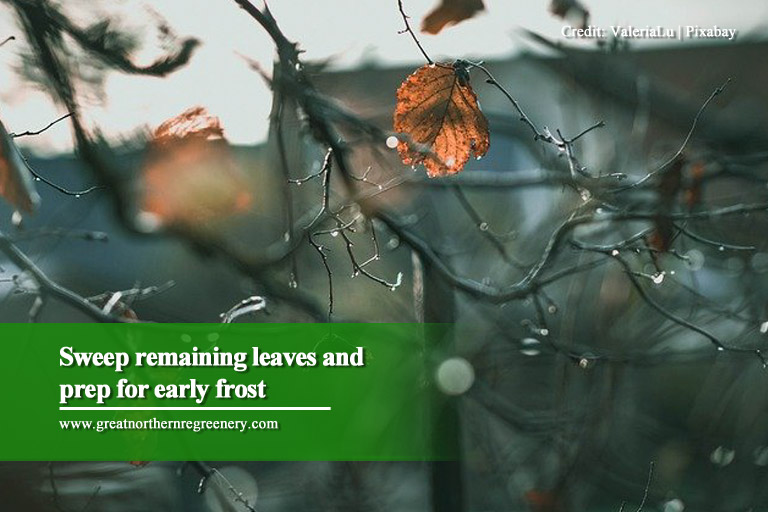
Landscape gardeners become in demand during November because most of us make last-minute preparatory steps on our lawn. We’ll need help so our gardening plants and trees do not suffer during the incoming winter.
- Get your lawn ready
In the winter, the wet, low temperatures and weak sunshine affect the lawn. That’s why your lawn needs to be taken care of before the cold weather begins. When the leaves fall in autumn, they should be cleared from the lawn regularly. Leaving leaves on your lawn will block out sunlight, which encourages the formation of dry brown patches on your soil, as well as moss growth.
Mow your lawn for the last time around the beginning of November and make sure that the grass is not cut shorter than 5cm as longer grass can make better use of less sunlight.
- Clean fallen leaves in downspouts and gutters
While it is important to clean the leaves on your lawn, it is also important to clean the fallen leaves in downspouts and gutters. When gutters and downspouts are blocked with leaves and debris, rainwater may not drain properly, and as water overflows, it can cause water damage on both the interior and exterior of your home.
This is extremely problematic if not fixed before winter because water trapped in your gutter, or those that are overflowing will freeze, making it harder to fix.
- Divide spring and summer blooming perennial plants
You need to divide spring and summer blooming perennial plants so that you can control the size of the plants, help rejuvenate them, and increase their number. Dividing and replanting keep rapidly spreading perennials under control. It also keeps them vigorous and blooming freely.
- Turn off outside water connections and drain garden hoses.
In the coming winter months, it’s especially important to turn off outside water connections in order to prevent your home’s interior and exterior pipes from freezing and bursting.
Most importantly, you need to drain your garden hose because when there is still water there, there’s a good chance that the water freezes and when it does, it expands. The result is burst pipes, broken valves and joints, or all of the above.
Here are a few reminders for your December gardening:
- Don’t forget to prune and trim your fruit trees, bushes, and shrubs. It’s easier to see what and where to prune in the winter when there’s less foliage.
- Make sure to clear your gutters of dead foliage and twigs to avoid clogging.
- While there are plants that can weather the colder months, you might have plants that can’t survive winter, so you need to protect your fragile plants.
- It is true that decomposition slows down during winter, but that is not a reason to stop composting. When warm weather rolls around, your compost will start cooking again.
Need this list wherever you go? Here’s a PDF version you can print and pin to the fridge, or save on your phone for easy access.
A Better Garden with Great Northern ReGreenery

Fall gardening can be pretty hectic, especially with the piles of leaves falling down from the trees in your property—not to mention the additional TLC they’ll need to prep them for the much colder weather ahead. Great Northern ReGreenery can help you take good care of your trees: whether it’s pruning, pest control, cabling, or removal, we’ve got you covered!
If you’ve got a property in need of tree services in North York or Simcoe County, call 905-775-7444 for inquiries and a free estimate. We service surrounding areas as well!





